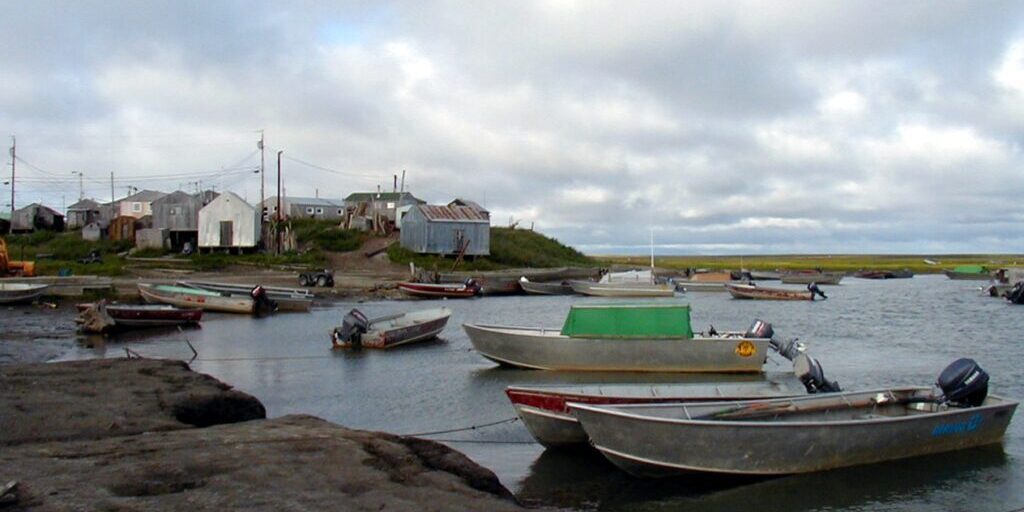The brand-new Hooper Bay Charter School (HBCS) opened its doors this fall to students in grades 4 through 8. Last month, the U.S. Department of Education selected HBCS to receive over $500,000 in federal grant funding.
Hooper Bay Charter School’s mission is to provide culturally relevant education through a unique, place-based science curriculum. Several school districts across Alaska, including the Bering Strait, Lower Yukon, and Nome, have integrated culturally responsive learning into their schools.
Even with the added challenge of opening a school amidst the ongoing COVID-19 pandemic, HBCS Principal Jamie Wollman says there are some positive outcomes.
“In reality, it was very helpful for our teachers and for our students because we got a lot more training with our teachers, and it allowed us to kind of slow down the pace and really focus on the most important things in our school and develop them first.”
– Jamie Wollman
Principal Wollman described the $1.3 million grant over five years from the U.S. Dept. of Education as, “icing on a beautiful cake that [the school’s staff] had already made.”
According to a press release from Alaska’s Department of Education and Early Development (DEED), the federal grant funding will allow HBCS to provide a high level of training for staff in the collaborative and interdisciplinary instructional methodology to support a unique STEM and dual-language focus, allow for the training and support of at least three local Alaska Native teachers, and provide resources for the regularly scheduled community events to showcase locally-relevant and science-based student learning for the community.
The grant will directly support the unique, culturally aligned curriculum that HBCS provides its students. The curriculum centers around thematic units, which Wollman calls “TREKS,” which are based on scientific topics or concepts found locally in Hooper Bay.
“For example, we have some windmills, and we use those as our scientific theme. We match standards to that theme, so that even in reading, writing, arithmetic, and everything else that we would be doing, including history and Yup’ik would be around the idea of the windmill and what it does.”

DEED Commissioner Dr. Michael Johnson said of the Hooper Bay school that, “increasing culturally relevant education to meet student and workforce needs was identified as one of the top priorities in Alaska’s education challenge.”
According to the Association of Alaska School Boards, research shows that Culturally Responsive Embedded Social & Emotional Learning (CRESEL) leads to an 11 percentile point increase on achievement scores; after 3.5 years of CRESEL instruction, students’ achievement scores, high school graduation rates, and college graduation rates all increased.
Principal Wollman believes that Hooper Bay Charter School’s culturally-aligned curriculum will empower her students to recognize the connection between education and their traditional Alaska Native culture.
“The biggest thing is that they connect with their community, they connect with their elders, and that they see a relevance for their Yup‘ik culture, and they can add that as part of their learning.”
Hooper Bay Charter School opened in the “YELLOW” zone in the fall but has since moved to a distance-learning model due to local COVID-19 cases.
Although Principal Wollman hopes for a chance to have students attend school in-person by the end of this school year, she is grateful for any opportunity to “open the world of the students… and make them stewards of their own education.”
Image at top: Hooper Bay, Alaska. File photo from public domain.




